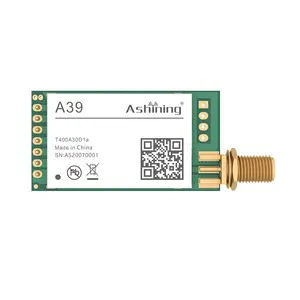
Vanch Good Price 1.5 Meter Range Uhf Rfid Reader Module 860-960mhz ISO 18000-6C Passive Uhf Rfid Reader Module





















Radio Frequency (RF) Ultra High Frequency (UHF) transceiver modules are integral components in the field of wireless communication. These modules operate within the UHF spectrum, typically ranging from 300 MHz to 3 GHz, which is widely utilized for broadcasting and mobile communication. The versatility of RF UHF transceiver modules makes them suitable for a broad array of applications, from commercial to industrial and even military use.
There are various types of RF UHF transceiver modules, each designed to meet specific requirements. Some are optimized for short-range communication, while others are built for long-distance transmission with higher power outputs. Applications of these modules are diverse, including but not limited to remote controls, telemetry, security systems, and wireless networks. Their ability to transmit and receive signals makes them a cornerstone in the development of IoT (Internet of Things) devices and automation systems.
The construction of an RF UHF transceiver module involves several components such as an antenna, filters, amplifiers, and a microcontroller. Materials used in the manufacturing process are selected for durability and performance, ensuring stability across various temperatures and conditions. Features may include low power consumption, high sensitivity, and the ability to operate on multiple frequencies, which are critical for ensuring reliable communication in different environments.
The advantages of using RF UHF transceiver modules are numerous. They offer the convenience of wireless communication, which allows for flexibility in the design and placement of electronic devices. Their compact size and low power requirements contribute to the miniaturization and efficiency of modern electronic systems. Furthermore, the use of UHF for transmission ensures a wider coverage area and better penetration through obstacles compared to higher frequencies.
When selecting an RF UHF transceiver module, it is crucial to consider factors such as frequency range, power output, and sensitivity. The module should be compatible with the intended application's communication standards and protocols. Additionally, the module's integration capability with existing systems and its adaptability to future technological advancements should be evaluated.
The integration of RF UHF transceiver modules into modern technology has been transformative. As the backbone of wireless communication, these modules facilitate the seamless exchange of data in complex systems such as automated factories, smart homes, and urban infrastructure. Their role in enabling connected devices to communicate effectively is pivotal in the advancement of smart technology solutions.